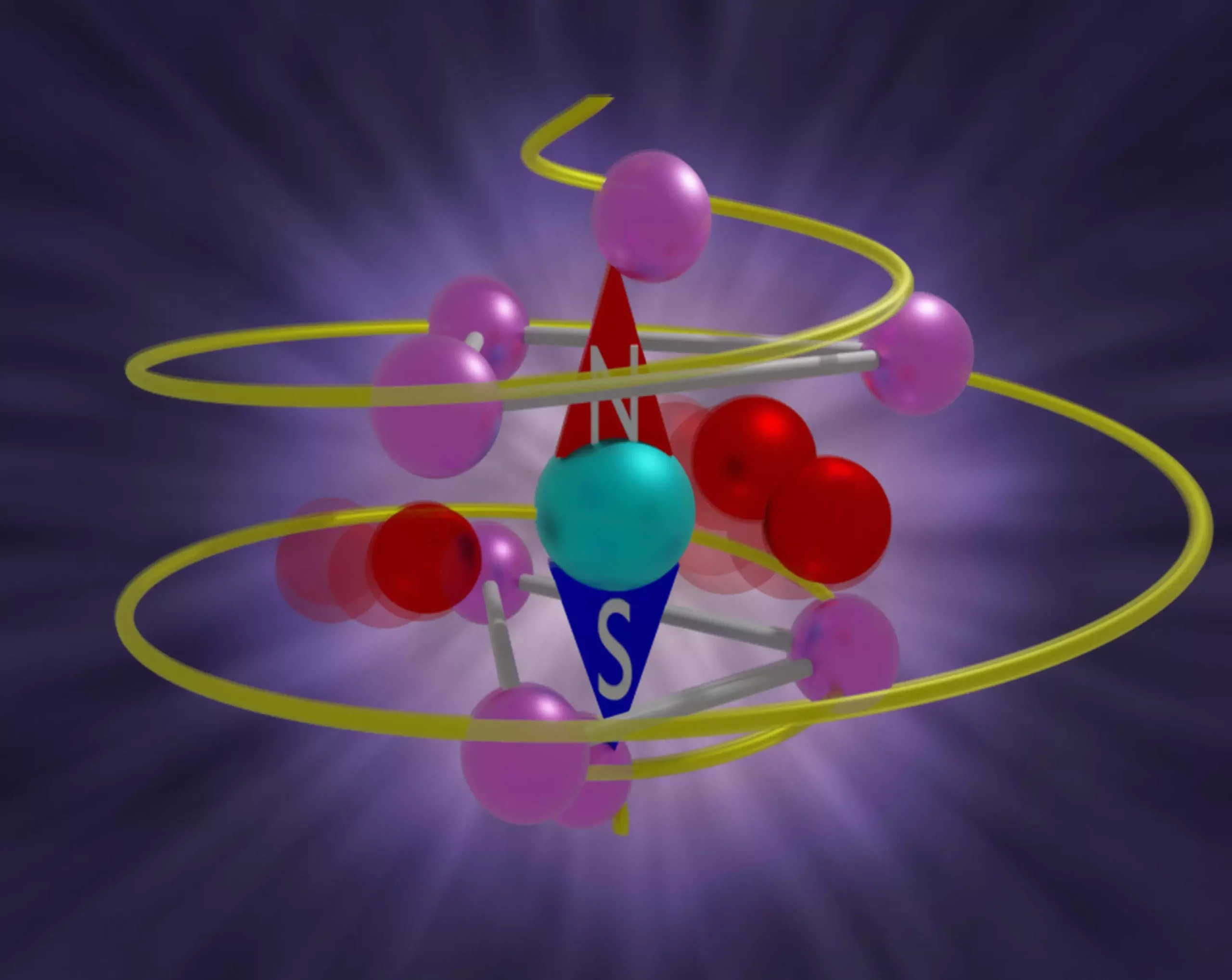Quantum materials are hailed as the key to unlocking a future of lightning-speed and energy-efficient information systems. However, harnessing their transformative potential has proven to be a challenge. In solid materials, the vast number of atoms often masks the exotic quantum properties that electrons carry. But now, researchers at Rice University have discovered a fascinating phenomenon that could change the game. By inducing a corkscrew-shaped vibration, known as a chiral phonon, in the atomic lattice of a rare-earth crystal, the researchers were able to transform the crystal into a magnet. This groundbreaking study, published in Science, sheds light on the interactions between atoms and electrons, opening up new possibilities for quantum materials.
When cerium fluoride is exposed to ultrafast pulses of light, its atoms engage in a captivating dance that enlists the spins of electrons. This alignment of spins, which would typically require a powerful magnetic field, occurs due to the chiral movement of the atomic lattice. The local magnetic field generated by the spins reacts to the atomic rotation, resulting in the polarization of spins within the material. Remarkably, this force that aligns the spins persists beyond the duration of the light pulse. Through additional frequency- and temperature-dependent measurements, the researchers confirmed that this magnetization arises from the collective chiral dance of the atoms.
The impact of atomic motion on electrons is surprising since electrons are significantly lighter and faster than atoms. Normally, electrons can adapt to a new atomic position immediately, disregarding their prior trajectory. This phenomenon, known as time-reversal symmetry, implies that material properties should remain unchanged regardless of the direction of atomic motion. However, the collective motion of atoms in a chiral phonon breaks this time-reversal symmetry. While the exact mechanism is not fully understood, this recent discovery adds to the growing body of evidence that demonstrates the role of chiral phonons in modifying material properties.
Understanding spin-phonon coupling is crucial for the development of real-world applications such as data storage on hard disks. In a previous study, the researchers demonstrated spin-phonon coupling in single molecular layers with linear atomic motion. Building on this, they sought to induce a chiral motion in a lattice of atoms. To achieve this, they carefully selected the right material and used theoretical computations to determine the appropriate frequency of light. By mixing intense infrared lights and manipulating the electric field, they were able to create light pulses that interacted with the chiral phonons. To monitor the spin and atomic motion, additional infrared light pulses were used. This innovative experimental setup not only provided insights into spin-phonon coupling but also paved the way for future research on magnetic and quantum materials.
The quantification of the magnetic field generated by chiral phonons opens up exciting possibilities for studying novel physics in dynamic materials. By unraveling the intricate interplay between atomic motion and electron spin, researchers can now design experiments to explore the potential of quantum materials. The ability to control and manipulate the quantum properties of matter could revolutionize various industries, from information technology to energy production. As scientists continue to push the boundaries of our understanding of quantum materials, the future looks brighter than ever.
Overall, this groundbreaking study on chiral phonons sheds light on the complex relationship between atomic motion and electron spin. The discovery of spin-phonon coupling opens up a new realm of possibilities for harnessing the potential of quantum materials. With further research and development, these materials could revolutionize technology and pave the way for a future of faster, more efficient information systems.


Leave a Reply